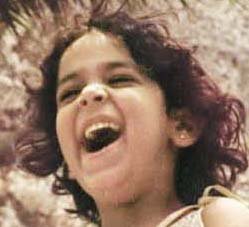Peer over the back fence and you see tiled roofs and a thin lane that the sand and mud have almost reclaimed for their own again.
From the garden, nine steps lead down to a tiny lawn. The steps are made of roughly-hewn slabs of rock, tiny shells embedded in them. At the centre of the lawn is a waist-high plant with small pink flowers. Tiny leaves grow in hundreds upon small branches that stick out from the plant’s centre like staggered plates.
Sitting in the back verandah, all I can hear is the whirring of a tablefan, which gets louder as it swivels towards me, some cicadas and the occasional bird. By ten in the morning, all is already hot and languid and even the birds are snoozing in the shade of the leaves. Even the wind is lazy and slow; it doesn’t just blow away the cigarette smokes but carries away the swirls intact, tossing them and playing with them till I can’t see them anymore.
As I sip the ganna juice with its distinctively grainy sweet flavour, Priyak tells us about his neighbours, two magpies punctuating his words. The one on the left, with whom he shares a well, lives in a two-storey house with stone walls and roughly filled-in mortar. A shingled roof and a wooden balcony without a railing. Two blue plastic chairs and an earthen pot are the only indicators that it is lived in. The window frames are painted the same blue as the chairs, though the paint is flaking and blackened in places. The owner of this house knifed the owner of the house we’re now luxuriating in the back porch of. In fact, that’s how Priyak ended up owning the house in the first place, getting it cheap as a result of a distress sale. On the right, in a house shaded by mango trees, lives a professor. To the front left, is a man who does different things at different times; these days he’s a gravedigger. And directly opposite, in the red house with the yellow diamonds adorning the fence, and the red mud lions perched on the gate, and netting that covers the entire front porch of the house in a translucent veil, live two old Catholic ladies who spend their time writing complaints about their neighbours to the cops. They once complained to Priyak that his door squeaks in the night when it is opened and shut.
...
If you follow the lane that goes by the front of his house it leads you to the Mapsa river. Past houses that seem to be a part of the trees and the brush that surround them. Past men hacking logs of wood and children on a swing slung from a branch. The green is almost overwhelming and I can imagine it becoming stifling in the monsoons, when the water makes everything come alive; every rock and fallen leaf would have some creature crawling under it, some little green thing trying to push its head through the soil. The air laden with moisture, with little flying insects and the call of cicadas. I can imagine it becoming a tropical jungle.
Up ahead, the lane branches into two. A flight of stairs seems to lead up, back into the centre of the village. The right lane wanders into a gentle, rolling decline, past a little stream, the offshoot of the river that I know is somewhere beyond the trees and the brush and the marsh-like heaviness in the air. A few hundred yards ahead it narrows into a goat path, and slowly meanders to the left. Then, suddenly, it opens up and in front, I can see the Mapsa flowing by, broad and sluggish like some Amazonian river. Trees bent over, leaves stretching out towards the water. Three narrow, long boats, built from single barks, seamless, jointless, are pulled up on the bank. Settling down in a boat each, A and I watch the river flow by, till we become mosquito meal and decide to head back.
...
That was inland Goa. Then, there was the sea.
Much delayed account of my one and only trip to Goa, earlier this year. Hence, the indulgent descriptiveness.Photos courtesy Mr Mahajan




4 comments:
Finally a post!
You know I can imagine speaking these very words, describing the experience in a conversation but punctuated with your own unique inflections and gestures. Minus them, it seems like I'm hearing it from someone else altogether and hence about someplace else as well.
Who is the lady by the water in the final pic?
Well written.
The next time visit the place in the summer and if you're lucky you'll be able to catch the boats showing off their fresh coat of cashew, and if you don't mind getting some on the dress then a boat ride down the river enveloped in the twang of cashew will bring the coast alive in the journey.
[ideasmith]
you mean this doesn't sound like me? Can't be, I wrote most of this while I was still in Goa, living these impressions of it.
The girl in pink is a pretty stranger at the beach.
[anil]
you paint a tempting picture; shall have to go in summer :)
HappyDiwali, n
aman
:)
Post a Comment